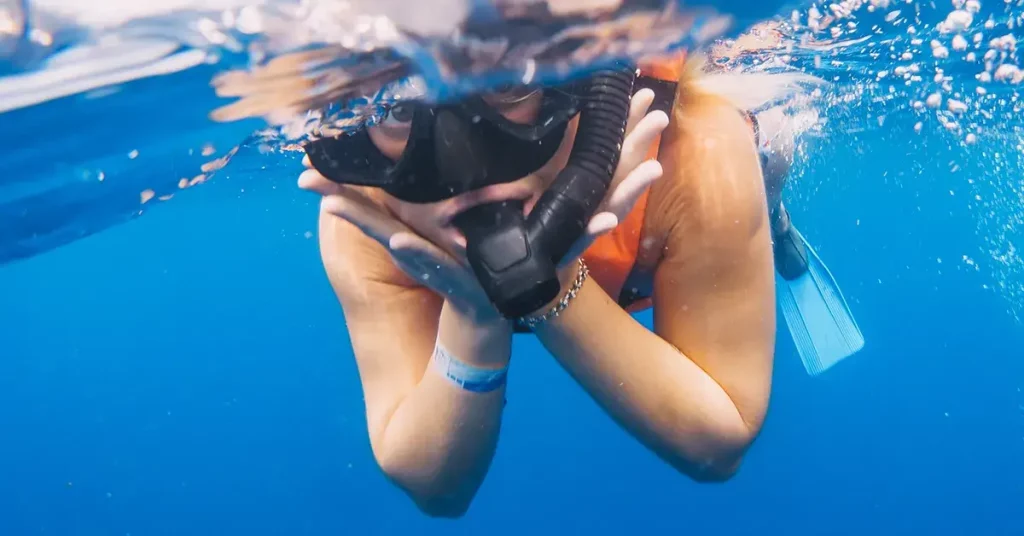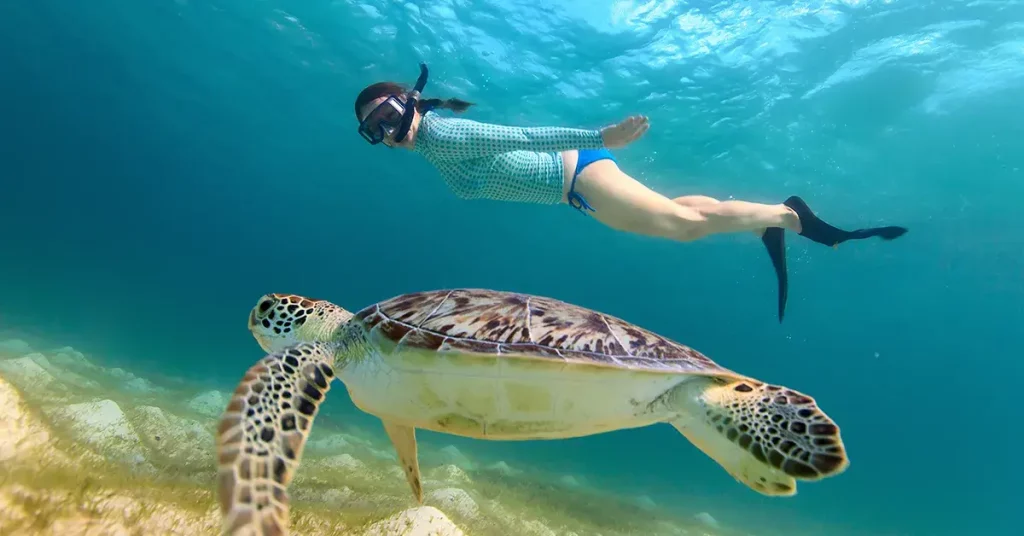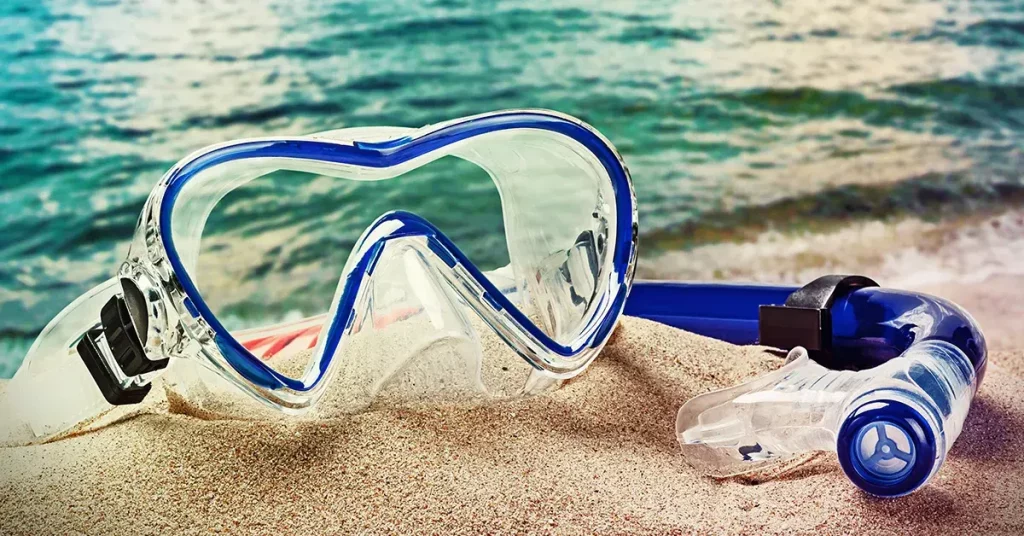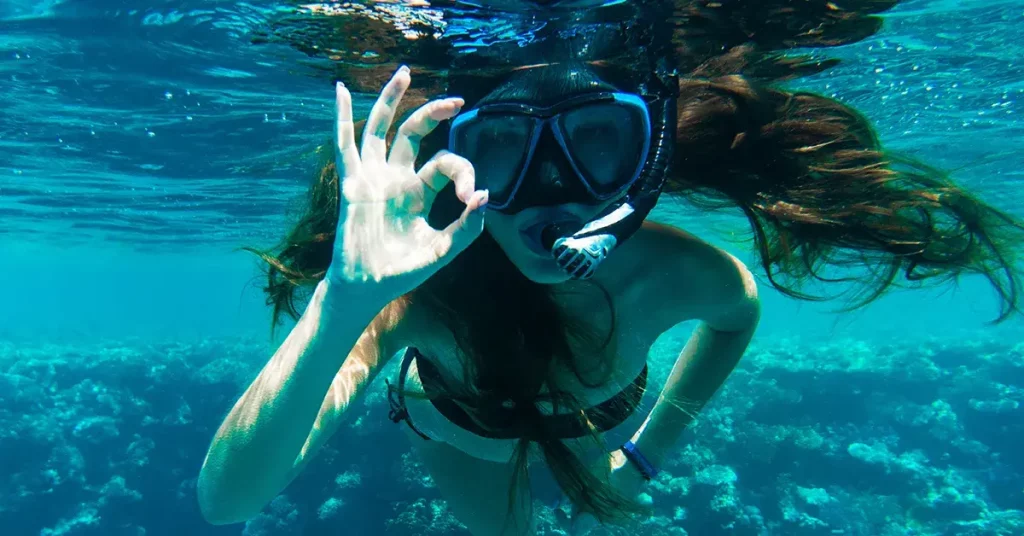I love snorkeling. A snorkeling trip is a fun way to explore an entirely different world to the one I live on land. But when I first started, I often wondered how dangerous is snorkeling. In general, it is a safe activity provide you follow the right protocols, have suitable equipment, and know the potential dangers. Keep reading to learn more.
Is Snorkeling Safe?
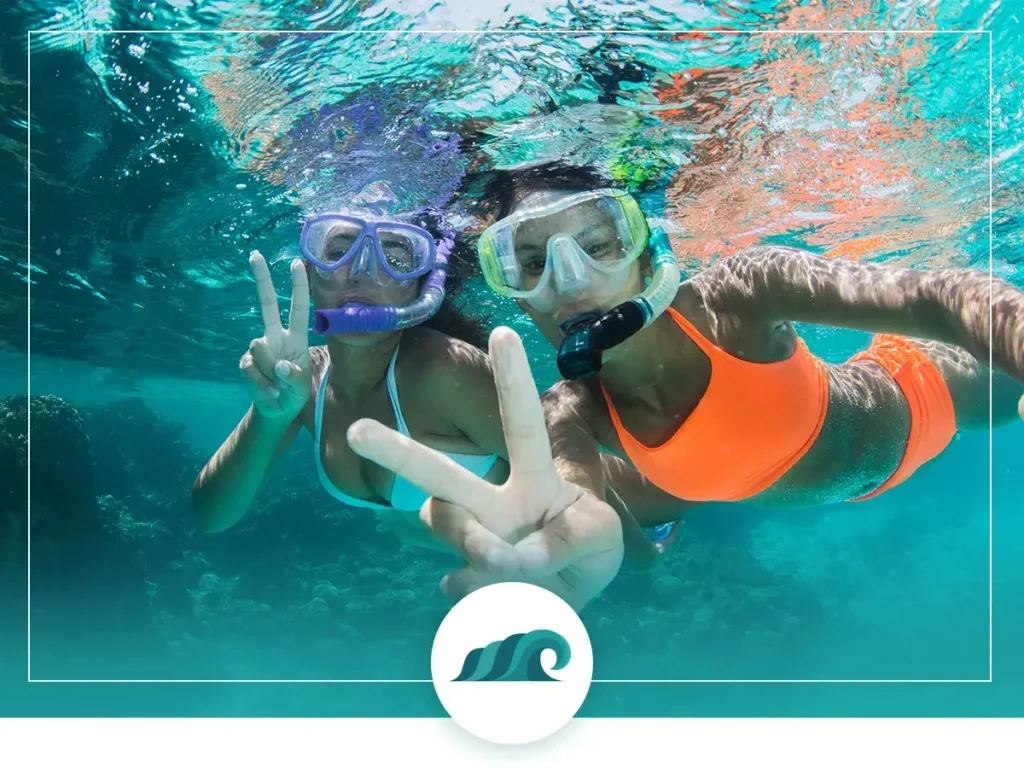
Yes, snorkeling is safe. Snorkeling is an aquatic activity that millions of people enjoy daily. It is fun, exciting and allows an up-close and personal look at marine life.
Most snorkelers are tourists and vacationers who visit islands, lagoons, beaches, and resorts, and there is usually a tour guide or instructor present to keep people safe.
Snorkeling is safe when done correctly. Even people who are not good swimmers can take part in this activity. People snorkel in shallow waters, which significantly reduces the risk of drowning.
Can Snorkeling Be Dangerous?
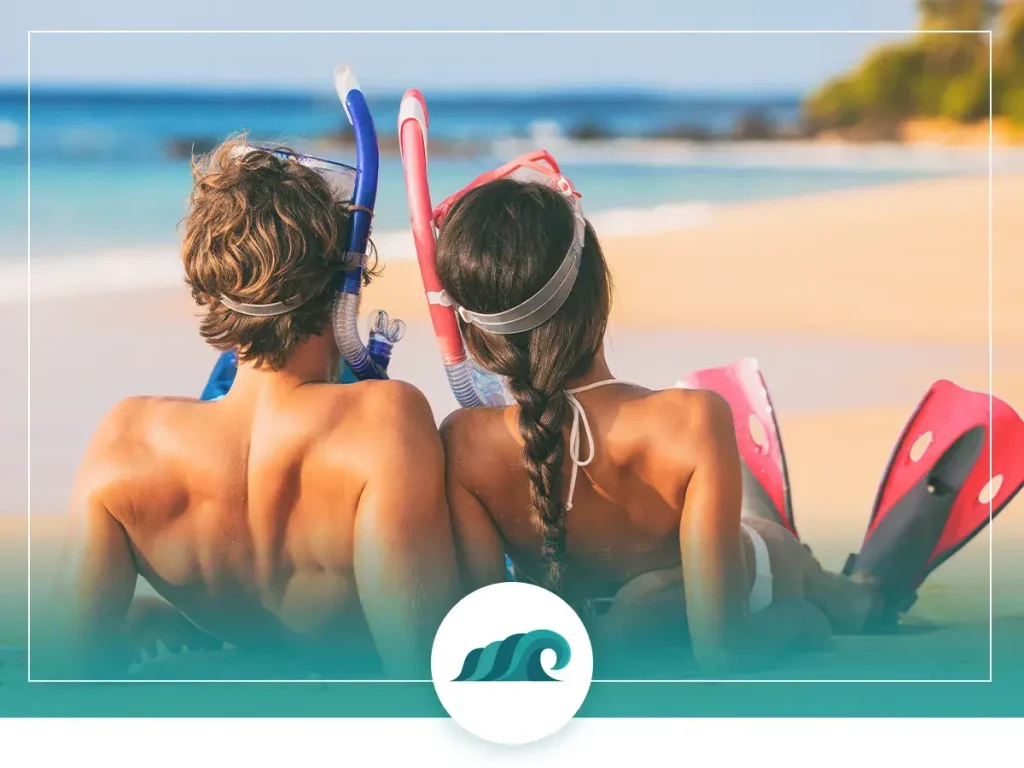
If certain precautions are not taken, snorkeling can be dangerous. Snorkeling in Hawaii is a leading cause of tourist deaths.
In certain weather conditions, snorkeling, much like scuba diving or free diving, can be a risky activity. It is vital to prepare accordingly and know what snorkeling risks are possible.
Some snorkeling risk factors include:
- Hazardous weather conditions
- The snorkelers’ overall health condition
- Damaged gear
- Dangerous marine life
- Improper use of snorkeling gear
- Snorkeling in places not approved for the activity
- Little or no supervision
The Dangers of Snorkeling
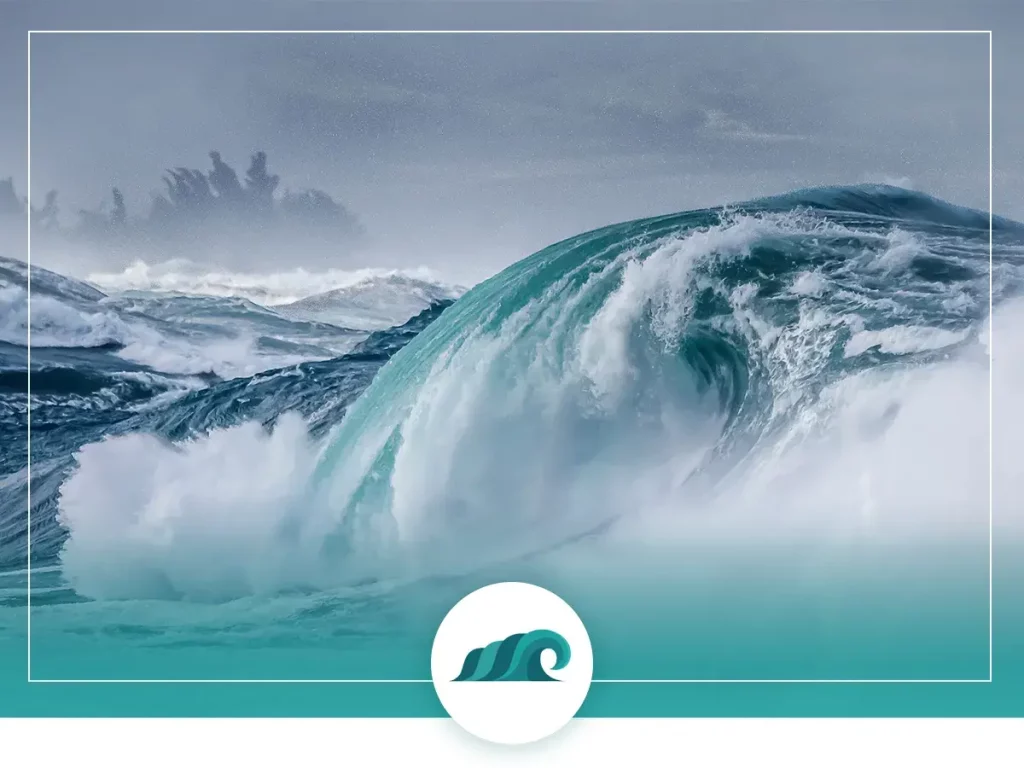
Be aware of the dangers and risks before attempting this activity.
Weather Conditions
Strong winds and storms cause treacherous waters. Snorkeling is best when the water surface is still flat. Rough waves will pull swimmers underwater or knock you off balance.
Splashing water can also enter the snorkel. The snorkel operates best when positioned above the surface and free of moisture. If using sun protection, you want to make sure you don’t get the sunscreen on your face mask at it can make for a messy lens.
Health Risks
A person’s health condition can also present a threat during aquatic activities. Individuals with preexisting conditions or health concerns are more likely to experience issues. Presumably, healthy individuals are privy to some dangers as well. Using common sense is often all it takes to stay safe while exploring the underwater world.
Environmental Dangers
Any aquatic activity presents the threat of drowning, even in shallow waters. Wearing some kind of lifevest or floatation device is always ideal.
Aquatic activities are delightful. Swimmers quickly lose track of time and spend hours exploring, causing prolonged exposure to the sun and extreme water temperatures. Sunburn, heatstroke, and hypothermia are severe conditions that can lead to serious injury or death.
Damaged or Improper Gear
Using the right size and kind of snorkel equipment is highly important. Masks should be intact and snug-fitting. Snorkels should fit securely in your mouth and extend far above the water’s surface to prevent water from entering.
Flippers and fins should fit well. Lifevests should be the adequate size and worn correctly.
Unsafe Conditions
It is best to snorkel in appropriate areas approved for the activity. Beach resorts and hotels have designated areas for desired sports. Independent snorkelers should research the chosen site and be sure of its safety. Ocean conditions and ocean currents should be observed as well. You don’t want to be out on a snorkel tour with a storm on the way.
How to Stay Safe While Snorkeling
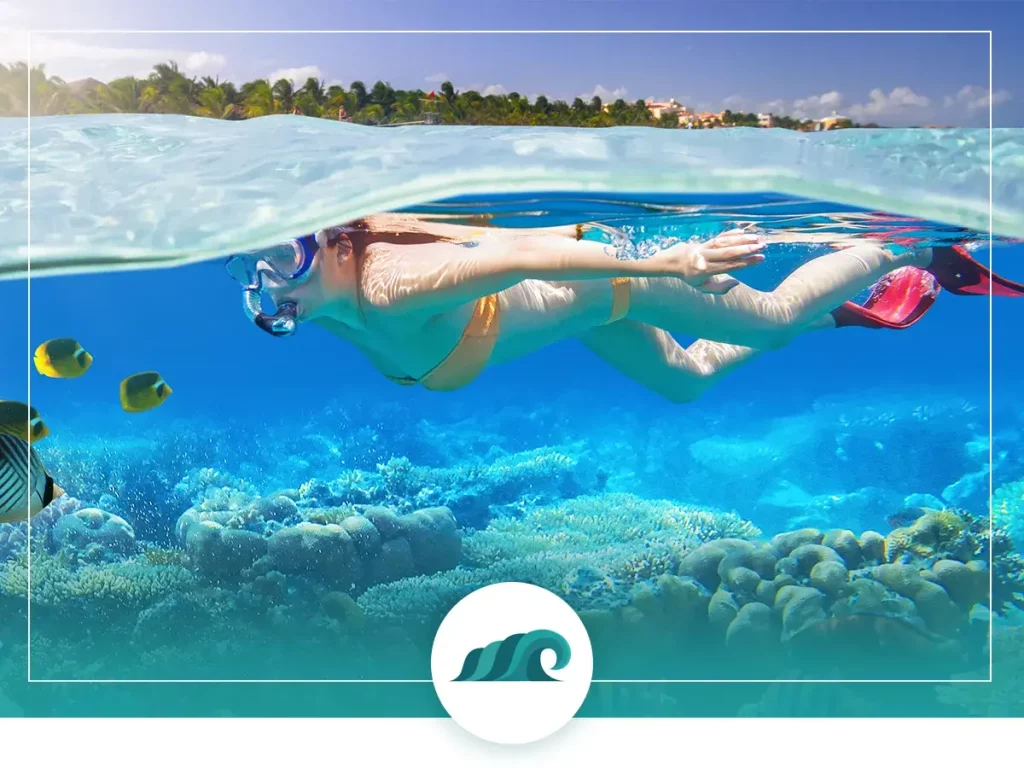
Knowing how dangerous snorkeling can be is only beneficial if you know how to stay safe. Ultimately, the best way to protect yourself during this activity is to follow all rules and guidelines. With this in mind, first-time snorkelers should take a course with a certified instructor.
- Only go out when conditions are ideal. Be sure that there will be clear skies and low winds. Don’t venture out in extreme heat or cold. If there is a sudden change in weather, vacate immediately and return only when it’s safe.
Outdoor adventures can be so thrilling that you lose track of time. Pay attention to how long you spend in the sun. Prolonged exposure to the sun’s rays is dangerous even while wearing sunscreen.
- Know your limits! Even though snorkeling occurs in shallow waters, drowning is still a risk. You should at least possess basic swimming skills when entering any amount of water.
Don’t overdo it! Exhaustion is another risk factor due to an increased amount of movement. If you start feeling tired, take a break. Be sure to utilize safe swimming practices to avoid overworking specific muscles.
- Be aware of your surroundings.
People often snorkel around coral reefs and sea creatures. Although these things are beautiful to look at, some can present dangers. Do not touch or remove any of the native plants or animals.
Pay close attention to wildlife. Waters are usually too shallow for large marine animals like sea turtles to populate, but some smaller ones like sea urchins may pose a threat. Stay calm and swim to safety if any dangerous animals are spotted.
Watch out for other people in your area. Be sure not to collide with others or block their line of sight.
- Always swim in pairs or when supervised by a lifeguard or tour guide. Having another person nearby is beneficial in case of emergencies.
- Snorkeling gear should always be in good condition and not contain any holes or tears. Swimmers should be comfortable, and snorkeling equipment should not inhibit swimming.
Snorkeling Gear
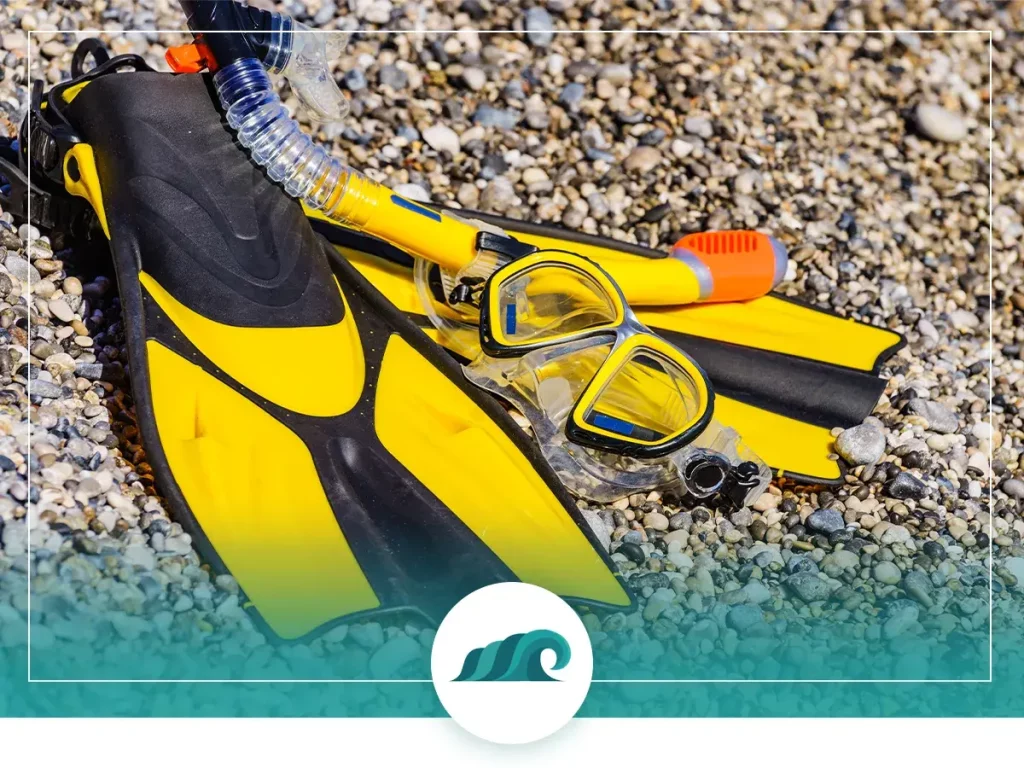
Your snorkel gear is an essential element to having a safe and fun adventure.
Masks
Snorkeling masks should be snug and comfortable. Your snorkel mask should fit in a way to prevent water from entering but not put too much pressure on your face. When positioning your mask, ensure no hair or other items interfere with the connection between your face and the mask.
Snorkels
Snorkels should fit comfortably in your mouth and attach well to your mask. Some snorkels have a snorkel tube that are designed to permit water from entering the open valve. There is always the possibility that water will get into your snorkel. Blowing a few intense bursts of air will release any trapped liquid.
Fins/Flippers
Fins are very useful in propelling you through the water. They help swimmers glide smoothly while taking in the sights. Fins come in corresponding shoe sizes. Be sure to choose the best fit.
Lifevests
Even avid swimmers will benefit from wearing a lifevest. These should be snug but not too tight and free of rips or damage.
Optional gear can include a swim cap, rash guard, wet suit, and mask defogger.
Summary
Is snorkeling dangerous? The activity presents some dangers, but when done correctly and under professional supervision, snorkeling is fun and safe. Swimmers should stay aware of their surroundings and not surpass physical limitations.
Be sure to acquire the proper gear and know how to use it. Then you’ll be all set for the perfect aquatic adventure. Be safe!

